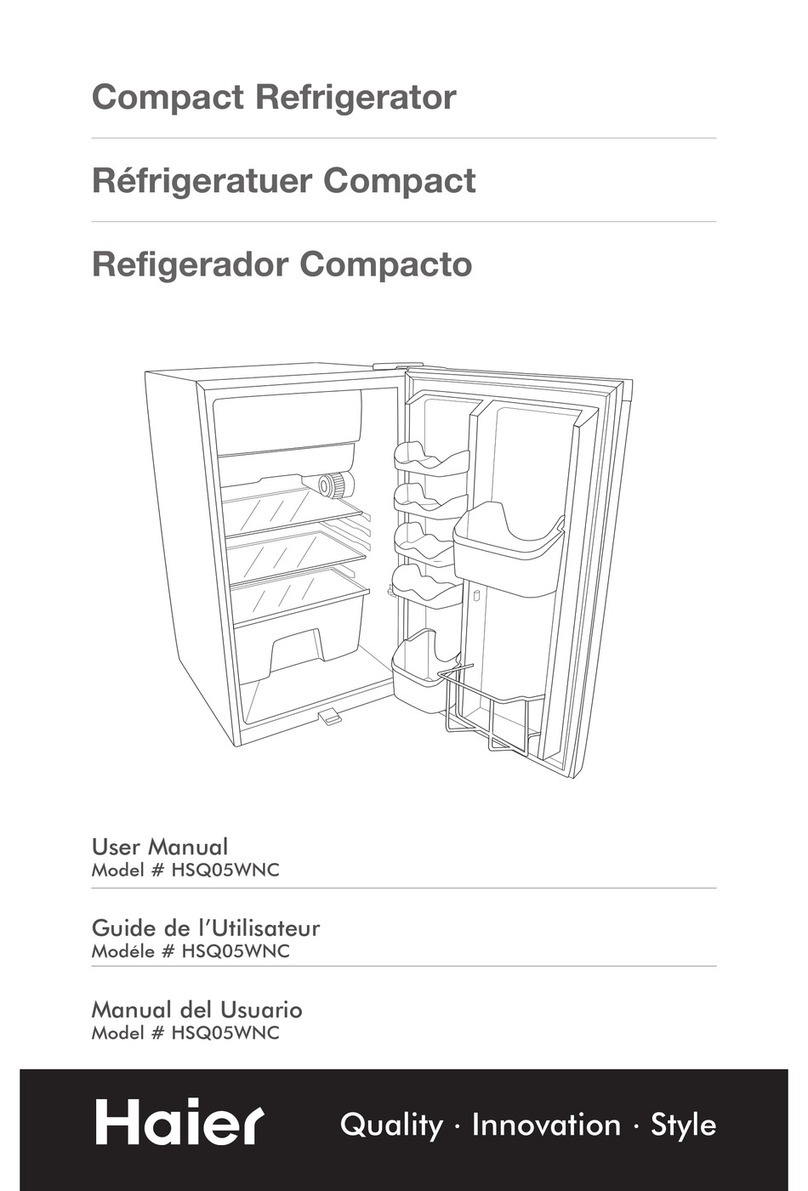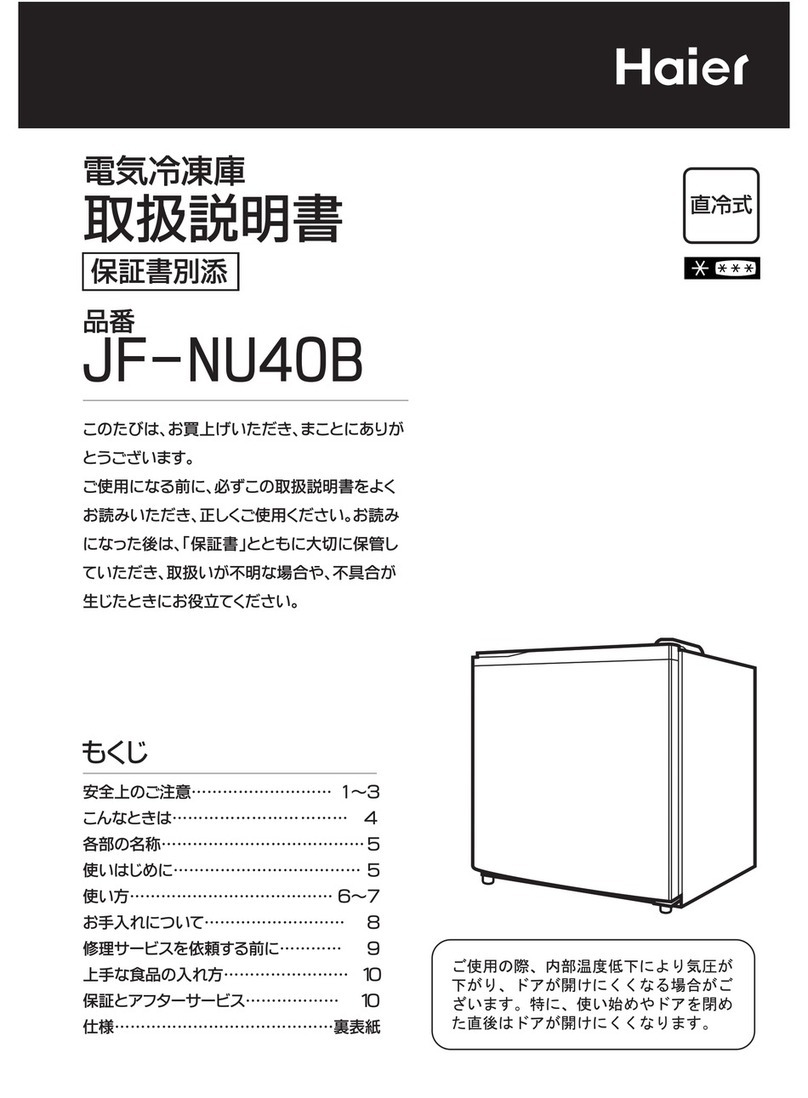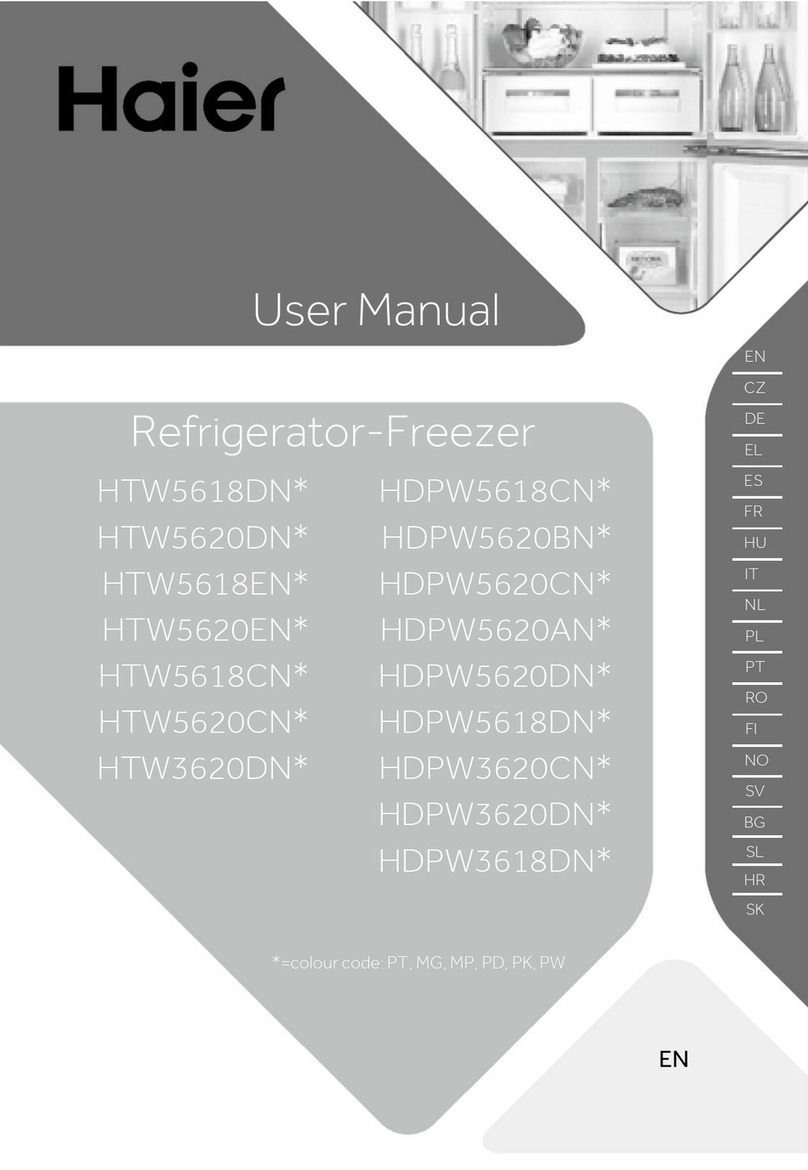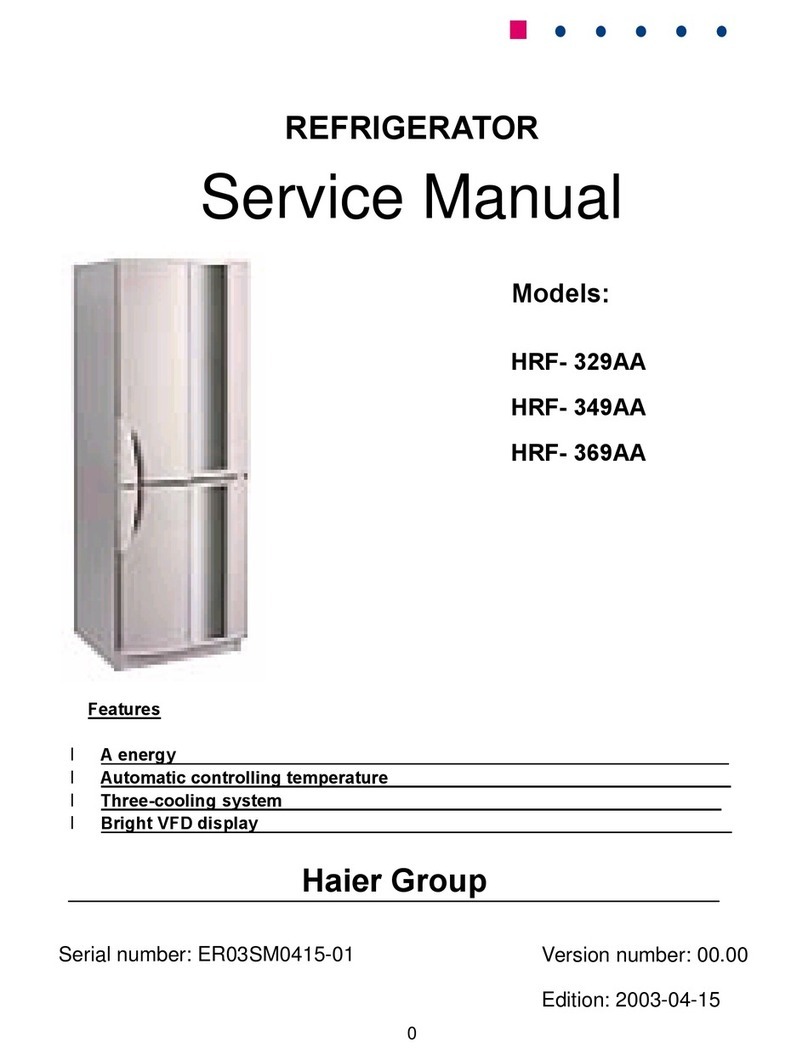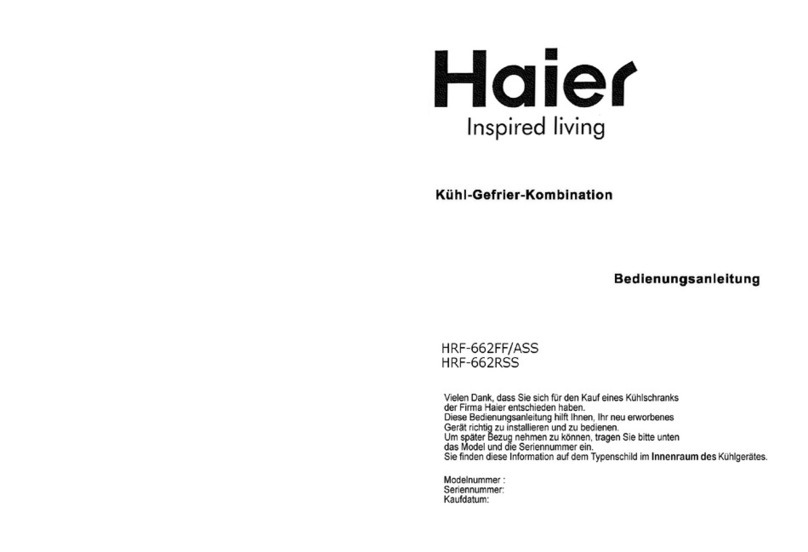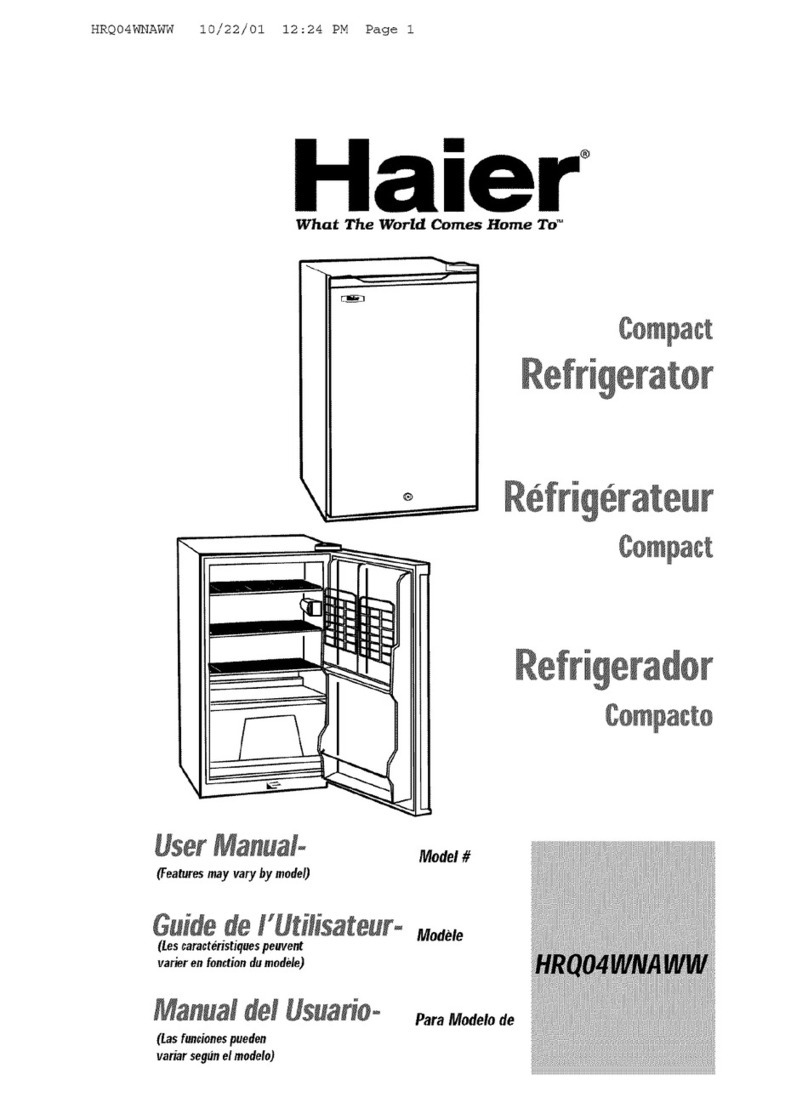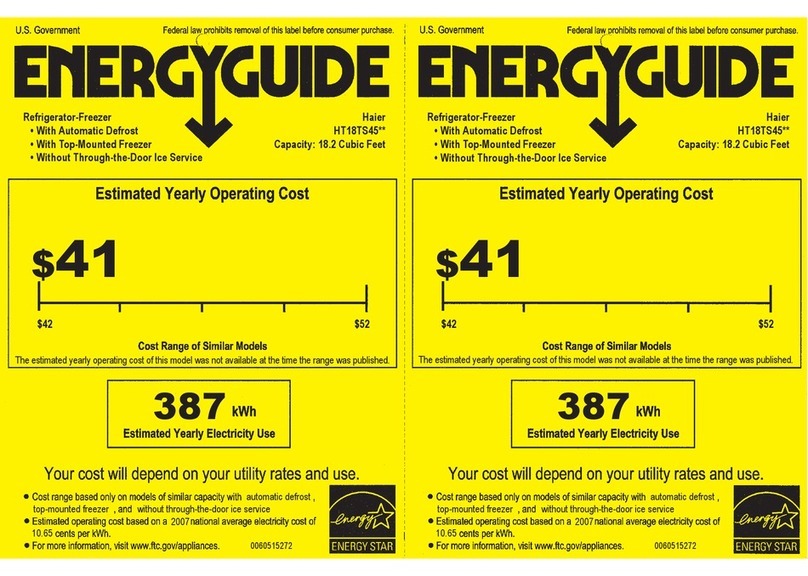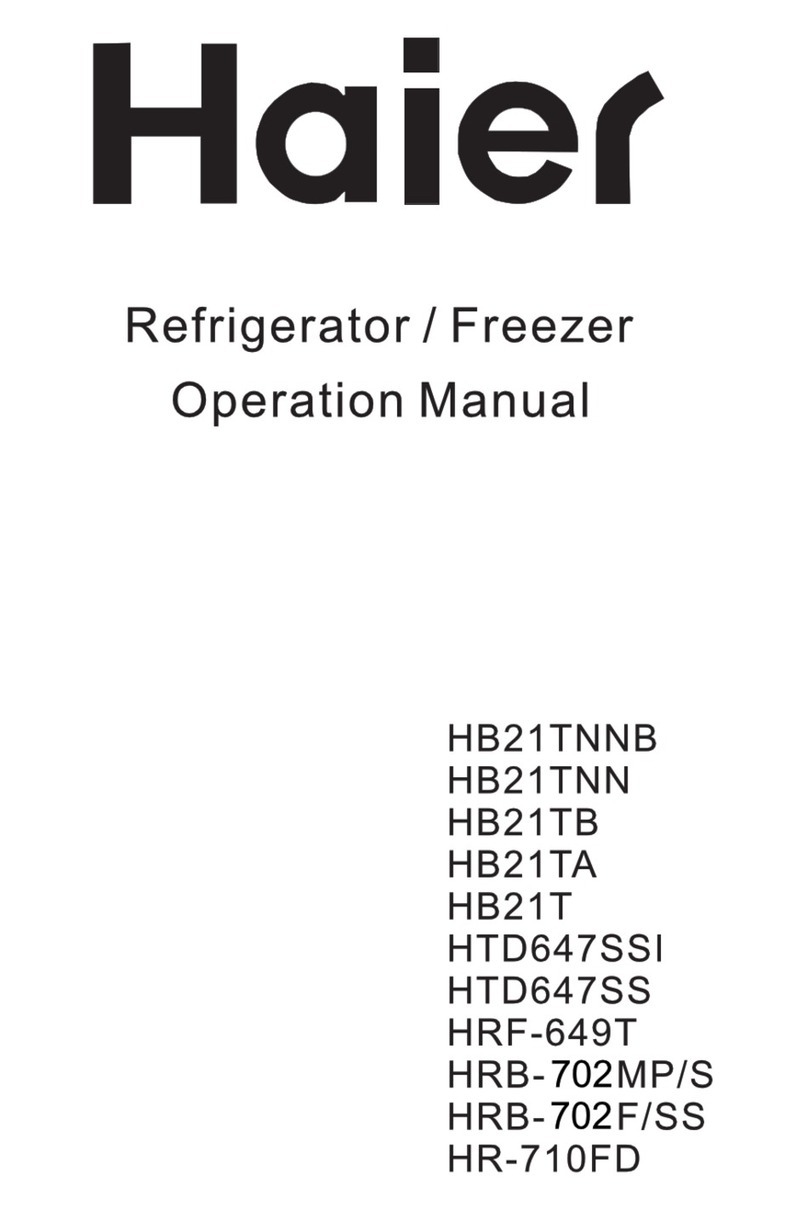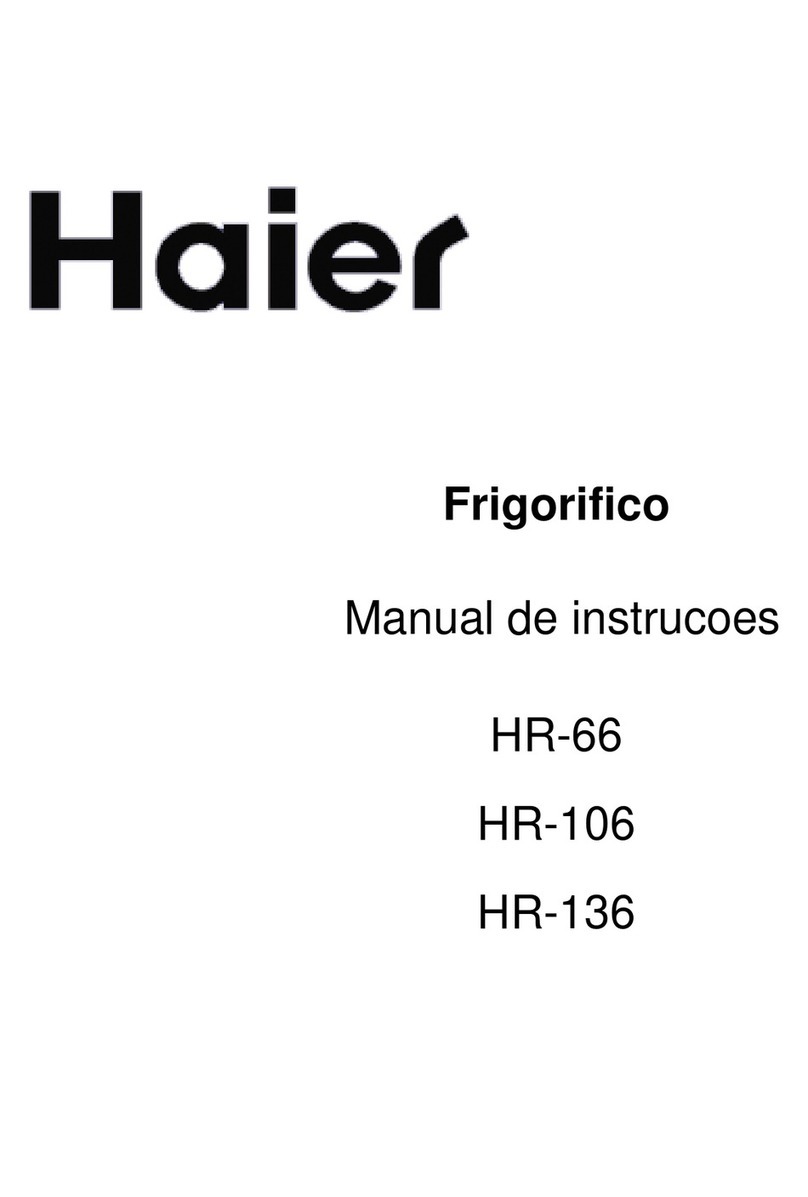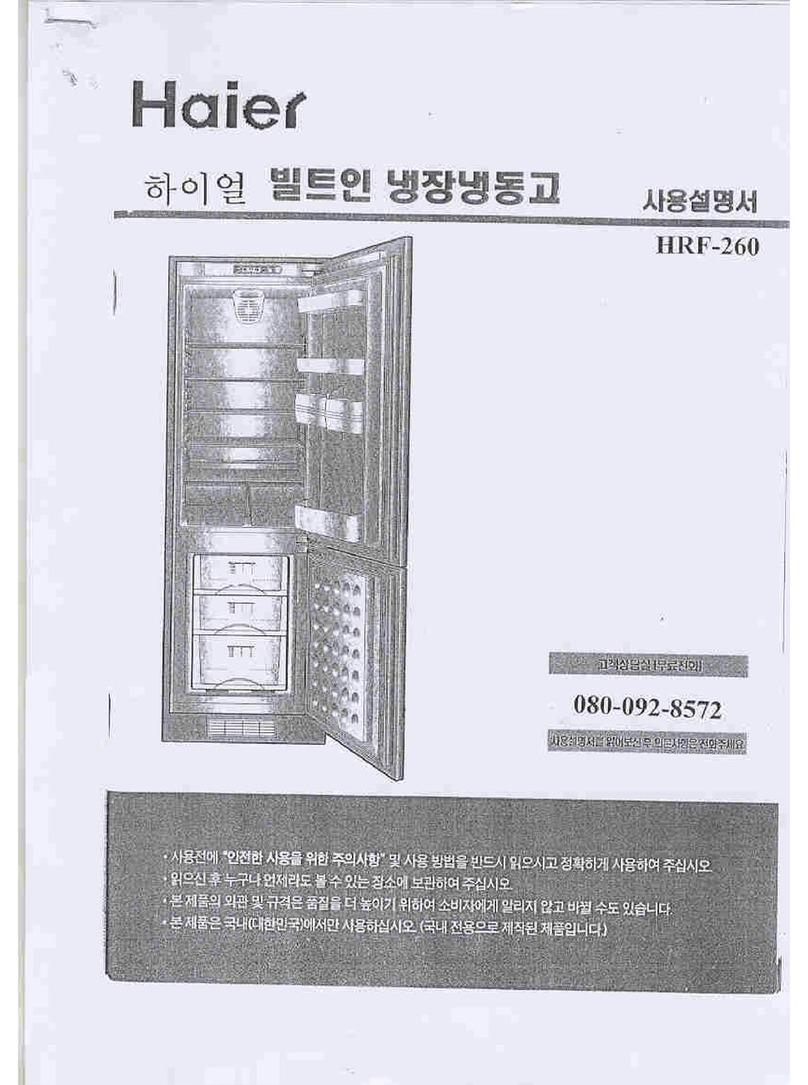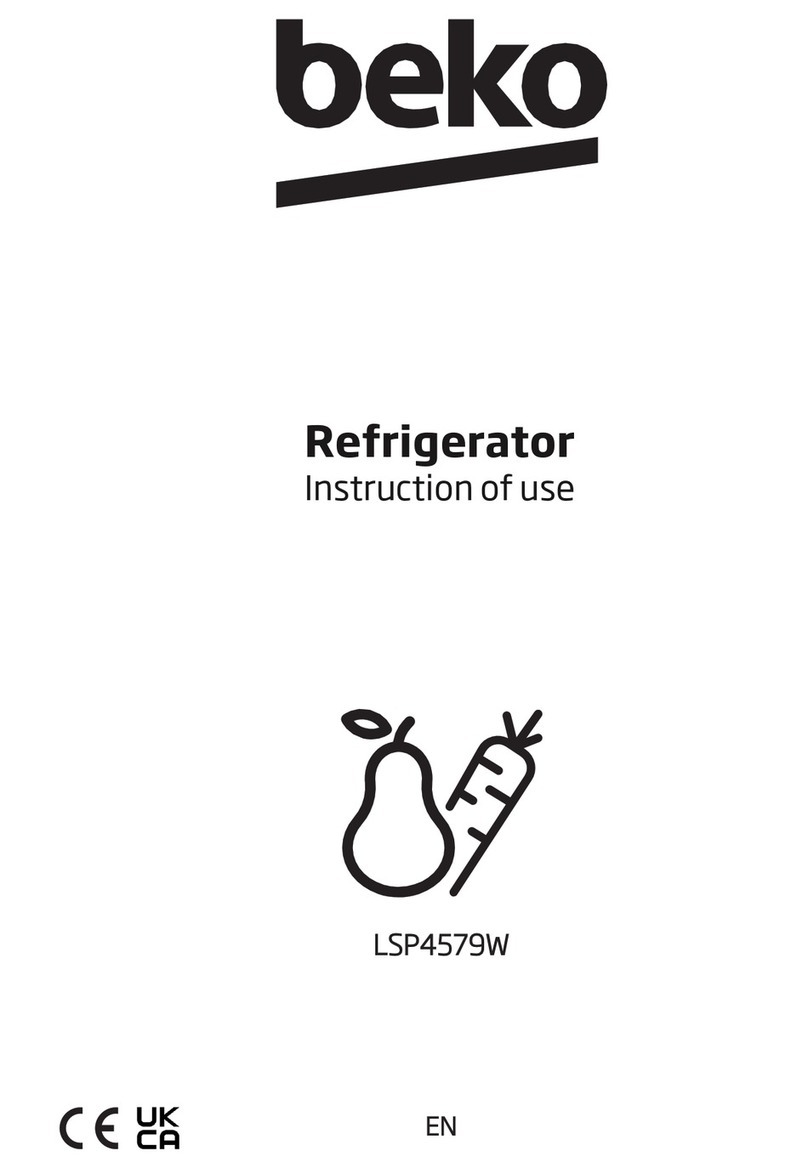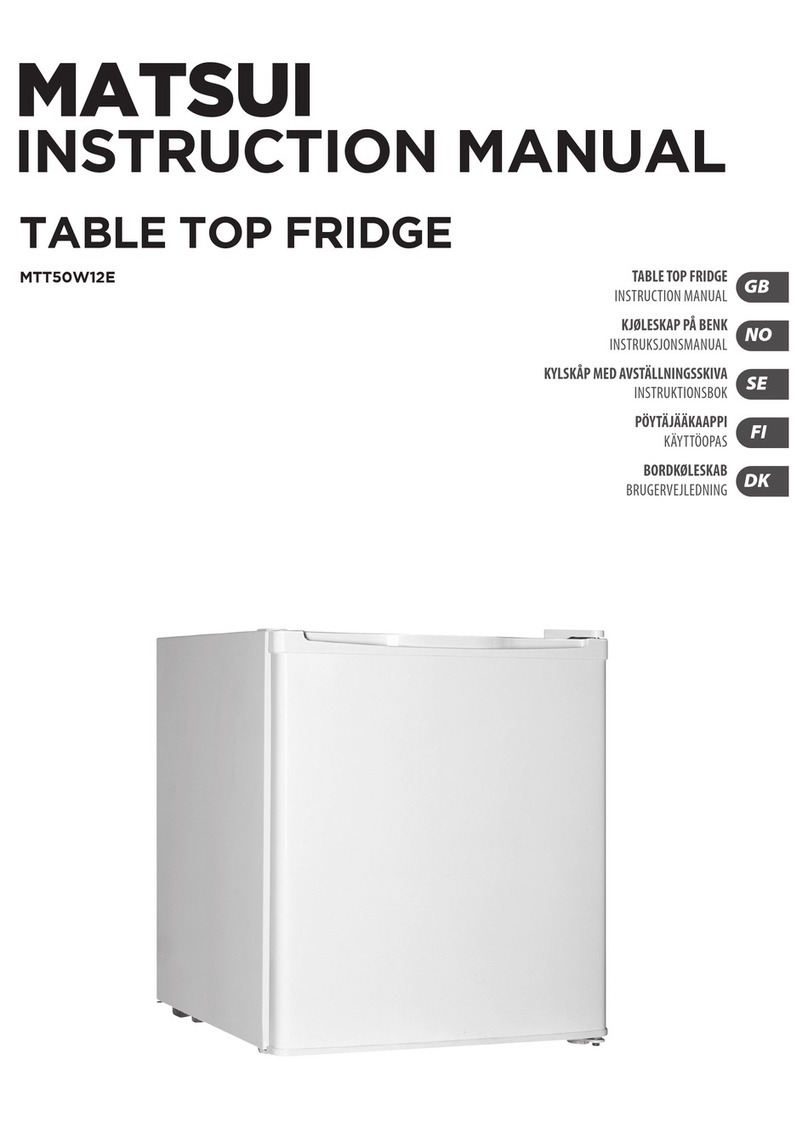
•Do not place your refrigerator next
to a heating vent, a range, or in
direct sunlight.
•Do not open door more often than
necessary.
•Keep the door closed as much as
possible, especially, in hot and
humid weather.
•Cover foods to reduce moisture
build up inside the refrigerator.
• Store only foods that require
refrigeration.
•For proper air circulation, do not
overfill your refrigerator shelves.
The refrigerator is designed for free-
standing installation only. It should
not be built-in. Allow a minimum of
1 inch on each side and above the
top of the refrigerator to ease instal-
lation and proper air circulation. Be
sure to install your refrigerator on a
floor that is strong enough to support
the unit when fully loaded.
If the refrigerator is not leveled,
adjust the front leveling legs by turn-
ing clockwise to raise the refrigerator
and counterclockwise to lower it.
Do not install your refrigerator where
the temperature will fall below 60˚F,
as it will not run frequently enough
to maintain proper temperature.
Important-for personal
safety, this appliance must be
properly grounded.
In the event of an electrical short
circuit, grounding reduces the risk of
electric shock by providing an
escape wire for the electric current.
This appliance is equipped with a
cord having a grounding wire with a
grounding plug. The plug must be
plugged into an outlet that is proper-
ly installed and grounded. Consult a
qualified electrician or service center
if the grounding instructions are not
completely understood. If doubt
exists as to whether the appliance is
properly grounded, have a qualified
electrician check the circuit to make
sure the outlet is properly grounded.
Do not, under any circum-
stances, cut or remove the
third (ground) prong from the
power cord.
Use of Extension Cords
Avoid the use of an extension cords
due to potential safety hazards
under certain conditions. If it is
necessary to use an extension cord,
use only a 3-wire extension cord that
has a 3–blade grounding plug and a
3-slot outlet that will accept the plug.
The marked rating of the extension
cord must be equal to or greater
than the electrical rating of the
appliance.
4
Energy Saving Tips
English
Refrigerator
Installation
Electrical
Connections
English






